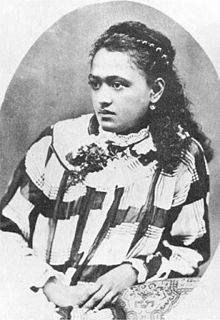Bora Bora (French: Bora-Bora; Tahitian: Pora Pora) is an island group in the Leeward Islands in the South Pacific. The Leeward Islands comprise the western part of the Society Islands of French Polynesia, which is an overseas collectivity of the French Republic in the Pacific Ocean. Bora Bora has a total land area of 30.55 km2 (12 sq mi). The main island, located about 230 kilometres (125 nautical miles) northwest of Papeete, is surrounded by a lagoon and a barrier reef. In the center of the island are the remnants of an extinct volcano, rising to two peaks, Mount Pahia and Mount Otemanu; the highest point is at 727 m (2,385 ft). Bora Bora is part of the Commune of Bora-Bora, which also includes the atoll of Tūpai. The main languages spoken in Bora Bora are Tahitian and French. However, due to the high tourist population, many natives of B...Read more
Bora Bora (French: Bora-Bora; Tahitian: Pora Pora) is an island group in the Leeward Islands in the South Pacific. The Leeward Islands comprise the western part of the Society Islands of French Polynesia, which is an overseas collectivity of the French Republic in the Pacific Ocean. Bora Bora has a total land area of 30.55 km2 (12 sq mi). The main island, located about 230 kilometres (125 nautical miles) northwest of Papeete, is surrounded by a lagoon and a barrier reef. In the center of the island are the remnants of an extinct volcano, rising to two peaks, Mount Pahia and Mount Otemanu; the highest point is at 727 m (2,385 ft). Bora Bora is part of the Commune of Bora-Bora, which also includes the atoll of Tūpai. The main languages spoken in Bora Bora are Tahitian and French. However, due to the high tourist population, many natives of Bora Bora have learned to speak English.
Bora Bora is a major international tourist destination, famous for its seaside (and even offshore) luxury resorts. Its major settlement, Vaitape, is on the western side of the main island, opposite the main channel leading into the lagoon. Produce of the island is mostly limited to what can be obtained from the sea and from the plentiful coconut trees, which were historically of economic importance for the production of copra.
 Flag of the Kingdom of Bora Bora (1837–1842)
Flag of the Kingdom of Bora Bora (1837–1842) Teriimaevarua III, last Queen of Bora Bora
Teriimaevarua III, last Queen of Bora BoraThe island was inhabited by Polynesian settlers around the 3rd century.[1] The first European sighting was made by Jakob Roggeveen in 1722.
James Cook sighted the island on 29 July 1769, with the help of a Tahitian navigator, Tupaia.[2] The London Missionary Society arrived in 1820 and founded a Protestant church in 1890. Bora Bora was an independent kingdom until 1888, when the French annexed the island as a colony and forced its last queen, Teriimaevarua III, to abdicate.
World War IIDuring World War II, the United States chose Bora Bora as a South Pacific military supply base and constructed an oil depot, an airstrip, a seaplane base, and defensive fortifications. The expedition, known as "Operation Bobcat", comprised nine ships, 18,000 t (18,000 long tons; 20,000 short tons) of equipment, and nearly 7,000 soldiers.[citation needed]
At least eight 7-inch guns were operated by some members of the 13th Coast Artillery Regiment (later renamed the 276th Coast Artillery Battalion). The guns were set up at strategic points around the island to protect it against a potential military attack. All eight of these guns remain in the area to this day.[3][4]
However, the island saw no combat. The American presence on Bora Bora went uncontested for the entire course of the war. The base was officially closed on 2 June 1946. The World War II airstrip was never enlarged to accommodate large aircraft, but it was nonetheless French Polynesia's only international airport until 1960, when Faa'a International Airport opened next to Papeete, Tahiti.[5]






Add new comment